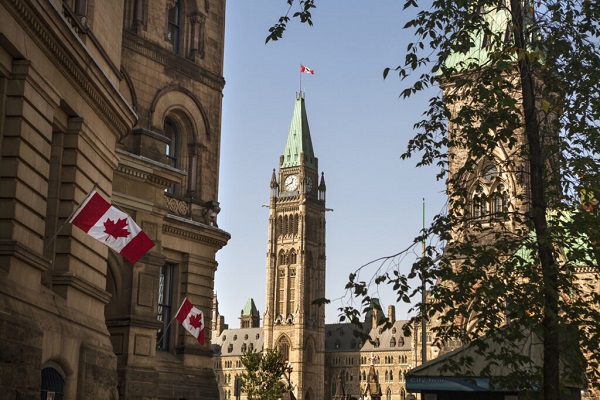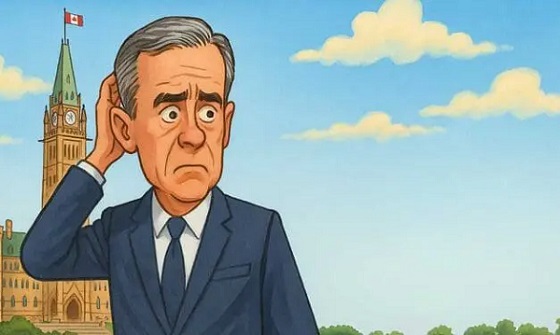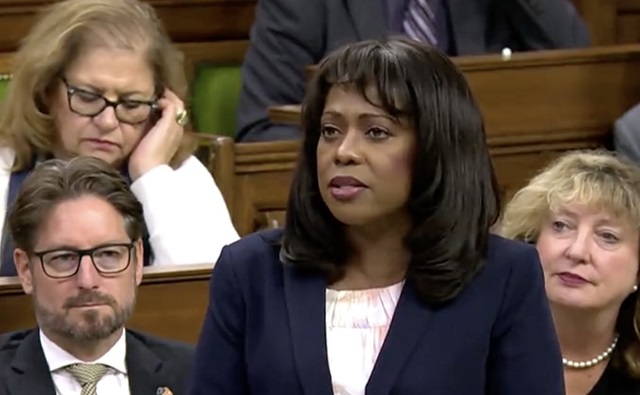C2C Journal
Creating Federal Institutions that Work for Our Times

By Jim Mason
It is increasingly obvious that Canada’s federal institutions are failing Canadians. Recent events underline a growing institutional dysfunction that requires major reform.
This year alone, then-Prime Minister Justin Trudeau asked the Governor General – a Trudeau appointee – to prorogue Parliament for no reason other than to more easily facilitate a Liberal leadership transition. Soon after, new Prime Minister Mark Carney’s government delayed the federal budget, the single most important piece of legislation any democratic government needs to produce – again out of pure political calculation. Then a non-confidence motion was decided on a voice vote, an egregious abuse of Parliamentary convention. These are just three examples that underscore deep systemic flaws.
Our political institutions were originally designed for a vastly different era. In 1867, Canada had just 3.4 million people in four provinces, travel was mainly by horse-and-buggy, and communication via handwritten letter. Yet today, over 40 million Canadians across ten provinces and three territories still rely on essentially the same governmental institutions Canada got at its founding. Doesn’t it seem likely that this structure is no longer optimized for a diverse, modern, technologically advanced nation?
The problems begin at the top. The Governor General, meant to be an impartial representative of the Crown – our head of state – has become little more than a figurehead, appointed by the Prime Minister and often used to send political messages. While retaining some constitutional authority, the Governor General’s role has been effectively neutered by convention and partisan politics.
The Senate, intended to provide “sober second thought” and, more importantly, regional representation, has become a hodgepodge of entrenched ideological actors appointed solely at the Prime Minister’s discretion.
The House of Commons, Canada’s primary legislative body, has so many caveats, exceptions and special provisions determining its makeup that a core feature – representation by population – has long since been lost. And its outdated quorum rules permit laws to pass with merely 20 MPs present, meaning just 3 percent of the current 343-member House can push a bill through.
More troubling is the unprecedented power wielded by the Prime Minister’s Office (PMO). The PMO rose to prominence under Pierre Trudeau in the late 1960s. It is staffed mainly by political appointees rather than career civil servants, and is accountable solely to the Prime Minister. This opaque institution virtually dictates policy, controls appointments, disciplines Cabinet and caucus members, and effectively operates as Canada’s de facto executive – without any democratic accountability. It has even been described as more powerful as a governing institution than the U.S. White House. Yet remarkably, the PMO lacks any constitutional legitimacy or statutory basis.
Canada’s judiciary is similarly compromised, with federal and Supreme Court judges appointed by the Prime Minister, risking ideological bias and intellectual stagnation. Rather than strictly interpreting the law, the judicial branch increasingly uses its decisions to shape, advance and even create policies that governments must follow, undermining democratic accountability and separation of powers.
To address these serious deficiencies, Canada should overhaul its federal institutions, drawing from the strengths of the original British North America Act to keep what is still working while redesigning what isn’t in order to adapt to contemporary realities. How could that be done?
Disentangle the current integration of the legislative and executive branches, thereby restoring the lapsed checks and balances built into Canada’s original Constitution, providing proper focus for each branch and enabling clear accountability of function.
Reconfigure the Senate to truly reflect Canada’s regional nature, with 10 Senators from each province and two from each territory, while ending the practice of partisan Senate appointments by selecting Senators randomly from qualified, mature citizens. If randomly chosen juries can determine a person’s fate in a criminal trial, then randomly selected Senators could provide fair oversight of legislation free from partisan agendas.
Adopt a modified proportional representation system for electing MPs, using existing census divisions to more fairly balance ideological, urban-rural and geographical representation. Coupled with modified criteria for recognizing official parties, the reformed House of Commons would accurately reflect the diverse perspectives of Canadian voters without the disruption that fringe parties often cause in proportional representation assemblies.
Depoliticize judicial appointments by establishing an objective, merit-based selection pool determined by peer consensus among legal professionals. This method would guarantee that judges were selected for impartiality, excellence and commitment to applying the law without ideological bias.
Impose strict term limits on key officials — including Senators, judges and executive officers — to prevent ideological entrenchment and stagnation, fostering regular renewal of ideas and personnel within the federal government.
Raise the qualifications for voters and candidates, emphasizing maturity – raising rather than lowering the voting age as some are advocating – residency, and sole citizenship to ensure informed democratic participation.
Significantly constrain the PMO by restoring transparency and accountability, limiting its role to advisory functions rather than allowing its unchecked executive authority to continue. Essential powers and responsibilities must return to Parliament and constitutionally legitimate institutions.
A more detailed explanation of these reforms can be found in C2C Journal. They are not, in fact, radical; they seek only to preserve what has historically worked, fix what’s clearly broken, and rebuild our political institutions to meet contemporary needs. The purpose is not revolution, but restoration – of purpose, clarity, order and fairness.
Canada’s current dysfunction is neither inevitable nor irreversible. It arises from outdated structures combined with modern abuses of power. With a clear vision and political courage, we can restore fairness, accountability and genuine democratic representation for all Canadians, revitalizing the
integrity and effectiveness of our federal institutions for generations to come.
The original, full-length version of this article was recently published in C2C Journal.
Jim Mason holds a BSc in engineering physics and a PhD in experimental nuclear physics. His doctoral
research and much of his career involved extensive analysis of “noisy” data to extract useful information,
which was then further analyzed to identify meaningful relationships indicative of underlying causes. He
is retired and living near Lakefield, Ontario.
Artificial Intelligence
The Emptiness Inside: Why Large Language Models Can’t Think – and Never Will

This is a special preview article from the:
Early attempts at artificial intelligence (AI) were ridiculed for giving answers that were confident, wrong and often surreal – the intellectual equivalent of asking a drunken parrot to explain Kant. But modern AIs based on large language models (LLMs) are so polished, articulate and eerily competent at generating answers that many people assume they can know and, even
better, can independently reason their way to knowing.
This confidence is misplaced. LLMs like ChatGPT or Grok don’t think. They are supercharged autocomplete engines. You type a prompt; they predict the next word, then the next, based only on patterns in the trillions of words they were trained on. No rules, no logic – just statistical guessing dressed up in conversation. As a result, LLMs have no idea whether a sentence is true or false or even sane; they only “know” whether it sounds like sentences they’ve seen before. That’s why they often confidently make things up: court cases, historical events, or physics explanations that are pure fiction. The AI world calls such outputs
“hallucinations”.
But because the LLM’s speech is fluent, users instinctively project self-understanding onto the model, triggered by the same human “trust circuits” we use for spotting intelligence. But it is fallacious reasoning, a bit like hearing someone speak perfect French and assuming they must also be an excellent judge of wine, fashion and philosophy. We confuse style for substance and
we anthropomorphize the speaker. That in turn tempts us into two mythical narratives: Myth 1: “If we just scale up the models and give them more ‘juice’ then true reasoning will eventually emerge.”
Bigger LLMs do get smoother and more impressive. But their core trick – word prediction – never changes. It’s still mimicry, not understanding. One assumes intelligence will magically emerge from quantity, as though making tires bigger and spinning them faster will eventually make a car fly. But the obstacle is architectural, not scalar: you can make the mimicry more
convincing (make a car jump off a ramp), but you don’t convert a pattern predictor into a truth-seeker by scaling it up. You merely get better camouflage and, studies have shown, even less fidelity to fact.
Myth 2: “Who cares how AI does it? If it yields truth, that’s all that matters. The ultimate arbiter of truth is reality – so cope!”
This one is especially dangerous as it stomps on epistemology wearing concrete boots. It effectively claims that the seeming reliability of LLM’s mundane knowledge should be extended to trusting the opaque methods through which it is obtained. But truth has rules. For example, a conclusion only becomes epistemically trustworthy when reached through either: 1) deductive reasoning (conclusions that must be true if the premises are true); or 2) empirical verification (observations of the real world that confirm or disconfirm claims).
LLMs do neither of these. They cannot deduce because their architecture doesn’t implement logical inference. They don’t manipulate premises and reach conclusions, and they are clueless about causality. They also cannot empirically verify anything because they have no access to reality: they can’t check weather or observe social interactions.
Attempting to overcome these structural obstacles, AI developers bolt external tools like calculators, databases and retrieval systems onto an LLM system. Such ostensible truth-seeking mechanisms improve outputs but do not fix the underlying architecture.
The “flying car” salesmen, peddling various accomplishments like IQ test scores, claim that today’s LLMs show superhuman intelligence. In reality, LLM IQ tests violate every rule for conducting intelligence tests, making them a human-prompt engineering skills competition rather than a valid assessment of machine smartness.
Efforts to make LLMs “truth-seeking” by brainwashing them to align with their trainer’s preferences through mechanisms like RLHF miss the point. Those attempts to fix bias only make waves in a structure that cannot support genuine reasoning. This regularly reveals itself through flops like xAI Grok’s MechaHitler bravado or Google Gemini’s representing America’s Founding Fathers as a lineup of “racialized” gentlemen.
Other approaches exist, though, that strive to create an AI architecture enabling authentic thinking:
Symbolic AI: uses explicit logical rules; strong on defined problems, weak on ambiguity;
Causal AI: learns cause-and-effect relationships and can answer “what if” questions;
Neuro-symbolic AI: combines neural prediction with logical reasoning; and
Agentic AI: acts with the goal in mind, receives feedback and improves through trial-and-error.
Unfortunately, the current progress in AI relies almost entirely on scaling LLMs. And the alternative approaches receive far less funding and attention – the good old “follow the money” principle. Meanwhile, the loudest “AI” in the room is just a very expensive parrot.
LLMs, nevertheless, are astonishing achievements of engineering and wonderful tools useful for many tasks. I will have far more on their uses in my next column. The crucial thing for users to remember, though, is that all LLMs are and will always remain linguistic pattern engines, not epistemic agents.
The hype that LLMs are on the brink of “true intelligence” mistakes fluency for thought. Real thinking requires understanding the physical world, persistent memory, reasoning and planning that LLMs handle only primitively or not all – a design fact that is non-controversial among AI insiders. Treat LLMs as useful thought-provoking tools, never as trustworthy sources. And stop waiting for the parrot to start doing philosophy. It never will.
The original, full-length version of this article was recently published as Part I of a two-part series in C2C Journal. Part II can be read here.
Gleb Lisikh is a researcher and IT management professional, and a father of three children, who lives in Vaughan, Ontario and grew up in various parts of the Soviet Union.
C2C Journal
Learning the Truth about “Children’s Graves” and Residential Schools is More Important than Ever

This is a special preview article from the:
By Tom Flanagan
When the book Grave Error was published by True North in late 2023, it became an instant best-seller. People wanted to read the book because it contained well-documented information not readily available elsewhere concerning the history of Canada’s Indian Residential Schools (IRS) and the facts surrounding recent claims about “unmarked graves.”
Dead Wrong: How Canada Got the Residential School Story So Wrong is the just-published sequel to Grave Error. Edited by Chris Champion and me, with chapters written by knowledgeable academics, journalists, researchers and even several contributors who once worked directly in residential schools or dedicated Indian hospitals, Dead Wrong was published because the struggle for accurate information on this contentious subject continues. Let me share with you a little of what’s in Dead Wrong.
Outrageously, the New York Times, the world’s most influential newspaper among liberals and “progressives”, has never retracted its outrageously false headline that “mass graves” were uncovered at Kamloops in 2021. Journalist Jonathan Kay exposes that scandal.
With similarly warped judgment, the legacy media were enthused about last year’s so-called documentary Sugarcane, a feature-length film sponsored by National Geographic and nominated for an Academy Award. The only reporter to spot Sugarcane’s dozens of egregious factual errors was independent journalist Michelle Stirling; her expose is included in Dead Wrong.
In spring 2024, the small Interior B.C. city of Quesnel made national news when the mayor’s wife bought ten copies of Grave Error for distribution to friends. After noisy protests by people who had never read the book, Quesnel city council voted to censure Mayor Ron Paull and tried to force him from office. It’s all described in Dead Wrong.
Also not to be forgotten is how the Law Society of B.C. has forced upon its members training materials that assert against all evidence that children’s remains have been discovered at Kamloops. As told by James Pew, B.C. MLA Dallas Brodie was expelled not from the NDP but from the Conservative caucus for daring to point out this obvious and incontrovertible
falsehood. But the facts are that ground-penetrating radar (used at the former Kamloops IRS) can detect only “anomalies” or “disturbances”, not identify what those might be; that no excavations have been carried out; and that no human remains whatsoever, let alone “215 children’s bodies”, have been found there. Brodie is completely correct.
Then there is the story of Jim McMurtry, suspended by the Abbotsford District School Board shortly after the May 2021 Kamloops announcement. McMurtry’s offence was to tell students the truth that, while some Indigenous students did die in residential schools, the main cause was tuberculosis. His own book The Scarlet Lesson is excerpted in Dead Wrong.
Historian Ian Gentles and former IRS teacher Pim Wiebel offer a richly detailed analysis of health and medical conditions in the schools. They show that these were much better than what prevailed in the Indian reserves from which most students came.
Another important contribution to understanding the medical issues is by Dr. Eric Schloss, narrating the history of the Charles Camsell Indian Hospital in Edmonton. IRS facilities usually included small clinics, but students with serious problems were often transferred to Indian Hospitals for more intensive care. Schloss, who worked in the Camsell, describes how it delivered state-of-the-art medicine, probably better than the care available to most non-native children anywhere in Canada at the time.
Rodney Clifton’s contribution, “They would call me a ‘Denier,’” describes his personal experiences working in two IRS in the 1960s. Clifton does not tell stories of hunger, brutal punishment and suppression of Indigenous culture, but of games, laughter and trying to learn native languages from his Indian and Inuit charges.
And far from the IRS system being a deliberate, sustained program of cultural genocide, as Toronto lawyer and historian Greg Piasetzki explains, the historical fact is that “Canada Wanted to Close All Residential Schools in the 1940s. Here’s why it couldn’t.” That’s because for many Aboriginal parents, particularly single parents and/or those with large numbers of children,
residential schools were the best deal available. In addition to schooling their kids, they offered paid employment to large numbers of Indigenous Canadians as cooks, janitors, farmers and health care workers, and later as teachers and even principals.
Another gravely important issue is the recent phenomenon of charging critics with “residential school denialism.” This is a false accusation hurled by true believers in what has become known as the “Kamloops narrative”, aimed at shutting down criticism or questions. A key event in this process was when NDP MP Leah Gazan in 2022 persuaded the House of Commons to approve a
resolution “That, in the opinion of the House this government must recognize what happened in Canada’s Indian residential schools as genocide.”
In 2024, Gazan took the next step by introducing a private member’s bill to criminalize dissent about the IRS system. Remember, the slur of “denialist” is a term drawn from earlier debates about the Holocaust. Gazan’s bill failed to pass, but she reintroduced it in 2025. Had such provisions been in force back in 2021, it might well have become a crime to point out that the
Kamloops GPR survey had identified soil anomalies, not buried bodies. Frances Widdowson examines this sordid political campaign of denunciation.
As the proponents of the Kamloops narrative fail to provide convincing hard evidence for it, they hope to mobilize the authority of the state to stamp out dissent. One of the main goals behind publication of Dead Wrong is to head off this drive toward authoritarianism.
Happily, Dead Wrong is already an Amazon best-seller based on pre-publication orders. The struggle for truth continues.
The original, full-length version of this article was recently published by C2C Journal.
Tom Flanagan is the author of many books on Indigenous history and policy, including (with C.P. Champion) the best-selling Grave Error: How the Media Misled Us and the Truth about Residential Schools.
-

 MAiD2 days ago
MAiD2 days agoFrom Exception to Routine. Why Canada’s State-Assisted Suicide Regime Demands a Human-Rights Review
-

 Business2 days ago
Business2 days agoCarney government should privatize airports—then open airline industry to competition
-

 Alberta2 days ago
Alberta2 days agoCarney’s pipeline deal hits a wall in B.C.
-

 Alberta1 day ago
Alberta1 day agoAlberta Sports Hall of Fame Announces Class of 2026 Inductees
-

 Censorship Industrial Complex1 day ago
Censorship Industrial Complex1 day agoConservative MP Leslyn Lewis slams Liberal plan targeting religious exemption in hate speech bil
-

 Business2 days ago
Business2 days agoWhat’s Going On With Global Affairs Canada and Their $392 Million Spending Trip to Brazil?
-

 Business2 days ago
Business2 days agoIs Carney Falling Into The Same Fiscal Traps As Trudeau?
-

 Energy1 day ago
Energy1 day agoCanada following Europe’s stumble by ignoring energy reality





